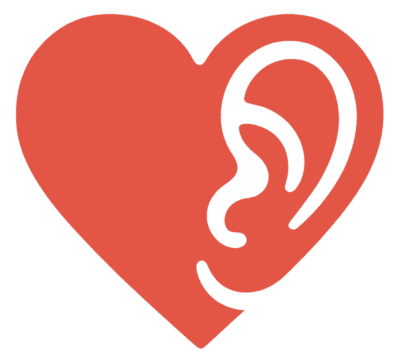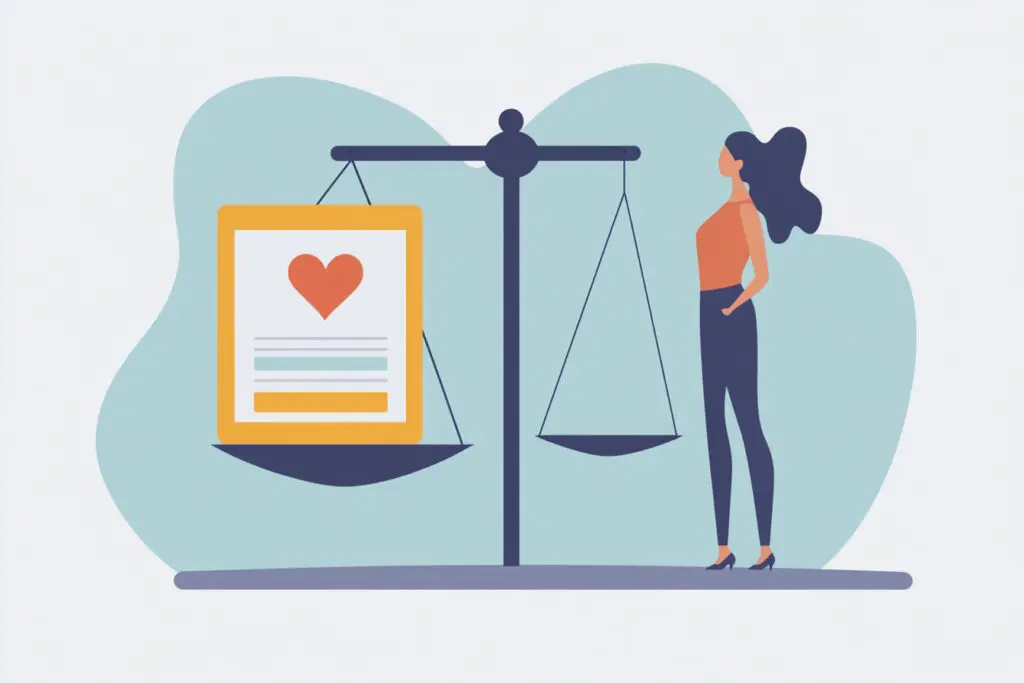Alright, let’s talk about something real. Putting yourself out there online as a woman in a creative field? It’s… a thing. We’re expected to be polished professionals, but also approachable, unique, brimming with personality, and somehow stand out in a sea of incredible talent. It feels like walking a tightrope sometimes, doesn’t it? I remember spending hours agonizing over my first online portfolio bio, trying to sound smart but not stuffy, creative but not flaky. It’s exhausting!
The digital space is crowded. Whether you’re a graphic designer, writer, photographer, illustrator, musician, maker, or any other kind of creative soul, your online profile – be it on LinkedIn, Instagram, Behance, your personal website, or elsewhere – is often the first impression you make. And let’s be honest, a generic profile just blends into the background noise. We pour so much heart into our work, but often neglect the little digital window that introduces us.
So, how do we craft profiles that feel authentic, capture attention, and actually work for us? Forget the stale corporate templates and the perfectly symmetrical, AI-generated paragraphs. Let’s dive into 5 creative profile tips for women in creative fields that focus on injecting you into your online presence. These aren’t rigid rules, just ideas I’ve seen work – both for myself and for other amazing women creatives I follow.
Tip 1: Ditch the Generic Bio – Tell Your Story
Please, oh please, can we collectively retire “Passionate [Job Title] with a love for [Vague Concept]”? It tells people absolutely nothing distinctive. Your bio is prime real estate! Instead of just listing skills (save that for a dedicated section), use this space to hint at your why.
What sparked your creative journey? Was there a specific moment, a weird obsession from childhood, a challenge you overcame that now fuels your work? You don’t need to write a novel, but a short, specific anecdote or a core belief can be incredibly magnetic.
I once read a photographer’s bio that started with, “I learned to see the world differently after spending a summer trying to photograph the same boring lamppost outside my window in fifty different ways.” Instantly, I felt like I knew something real about her approach. It was quirky, specific, and way more memorable than “Experienced photographer capturing unique perspectives.”
Think about it: What’s a tiny, true detail that shaped how you create? Maybe you’re a writer who fell in love with words trying to decipher your grandmother’s handwritten letters. Maybe you’re an illustrator whose style was born from doodling on napkins during boring meetings (we’ve all been there, right?). Find that little hook. It sounds maybe a bit cheesy to call it a ‘story’, but honestly, that’s what connects us as humans. Don’t be afraid to be specific; vulnerability, in small doses, is magnetic.
Tip 2: Showcase Your Process, Not Just the Polish
We creatives love a beautifully finished piece. But sometimes, only showing the final, perfect version can feel a bit… sterile? Intimidating, even? People connect with the journey, the effort, the humanity behind the creation.
Consider sprinkling in some behind-the-scenes magic. This could be:
- Sketches or initial concepts (even the messy ones!)
- A photo of your workspace (organized chaos is relatable!)
- A short video talking through a challenge you faced on a project
- Brainstorming notes or mood boards
- Maybe even a “blooper” – a design that didn’t quite work but taught you something valuable.
I know, it feels a bit scary showing the messy bits. We’re often conditioned to only present perfection. But showing the process does a few things: it demystifies your craft, makes your skills feel more tangible, and builds trust. It shows you’re not just waving a magic wand; you’re putting in the work, thinking critically, and evolving. Plus, it gives people more visual variety to engage with than just polished final pieces. I spent ages only posting final illustrations, and engagement felt… polite. When I started sharing warm-up sketches or talking about colour palette struggles, the conversations really opened up.
Tip 3: Let Your Personality Shine Through Your Visuals (Beyond Your Work)
Okay, your work is visual (or auditory, or text-based!), but how does the rest of your profile look and feel? Is your profile picture a stiff corporate headshot that looks like it was taken under fluorescent lights in 2010? Does the overall aesthetic of your profile clash with the vibe of your actual creative work?
- Your Profile Picture: It doesn’t need to be wacky, but let it show some personality! Maybe it’s you in your creative space, laughing, interacting with your tools, or just a shot where you look genuinely like you, not a smoothed-over mannequin. Think about the expression, the background, the colours. Does it feel like you?
- Overall Visual Identity: Think about colours, fonts (if applicable on the platform), and the style of any graphics or banners you use on your profile. Do they align with your creative style? A minimalist designer probably shouldn’t have a profile exploding with neon gradients (unless that’s ironically their thing!). Create a cohesive feel that whispers (or shouts) your brand identity even before someone dives into your portfolio. I remember spending a whole weekend just tweaking the banner image on my portfolio site until the feeling was right – it seemed small, but it made a huge difference to how cohesive everything looked.
Tip 4: Engage Authentically – Be a Human, Not a Broadcast Bot
Having a great profile is one thing, but being a ghost is another. Social platforms, portfolio sites with comment sections, even LinkedIn – they’re meant to be social (shocking, I know!). Simply broadcasting your work and waiting for applause isn’t the most effective (or fulfilling) strategy.
- Engage with Others: Follow other creatives whose work you genuinely admire. Leave thoughtful comments (more than just “Great work!”). Ask questions. Share their work if it resonates.
- Respond Thoughtfully: When people comment on your work, engage back! Answer questions, thank them specifically, maybe ask something in return.
- Share Beyond Self-Promo: Share articles, resources, or thoughts relevant to your field or creative life. Talk about struggles or discoveries. Ask your audience questions.

Honestly, this is where real connections happen. I know, finding the time is tough. We’re busy actually doing the creative work. But even 10-15 minutes a day of genuine interaction can make a huge difference. It builds community, sparks inspiration (I’ve gotten project ideas from random comment threads!), and shows potential clients or collaborators that you’re an active, engaged professional, not just a static portfolio page. It’s amazing how a real conversation, even a short digital one, can feel so much more rewarding than just watching ‘like’ counts go up.
Tip 5: Inject Your Unique Voice – Write Like You
This ties back to the bio, but applies everywhere – captions, project descriptions, introductory text, even your ‘About Me’ page. In a world increasingly filled with bland, AI-like content that sounds perfectly structured but utterly soulless, your unique voice is a superpower.
How do you actually talk about your work? Are you witty? Deeply analytical? Enthusiastic and bubbly? Poetic? A little bit sarcastic? Let that come through!
- Use Your Natural Language: Don’t feel pressured to use overly formal jargon unless that’s genuinely how you communicate. Use contractions. Maybe throw in an appropriate colloquialism or a bit of humour if it fits your personality.
- Vary Sentence Structure: Mix short, punchy sentences with longer, more flowing ones. Read your writing aloud – does it sound like you? Or does it sound like a textbook?
- Don’t Be Afraid of Opinions: While maintaining professionalism, it’s okay to express your perspective or have a distinct take on things within your field. Bland neutrality is forgettable. My personal pet peeve is reading project descriptions that just list the software used – tell me the story behind the project, the challenge, the breakthrough!
- Edit for Flow, Not Perfection: Perfect grammar is good, but sometimes slightly ‘imperfect’ phrasing or an unexpected transition sounds more human than robotic precision. Aim for clarity and authenticity over sterile correctness.
Wrapping It Up for Creative Profile Tips for Women in Creative Fields
Look, crafting an online presence that truly reflects you takes effort, and it’s an ongoing process. It’s not about creating a fake persona; it’s about finding ways to let the most authentic, engaging parts of your professional creative self shine through the digital noise. These 5 creative profile tips for women in creative fields are really just starting points – permission slips, maybe, to break away from the boring templates and inject more you into your pixels.
Don’t try to be everything to everyone. Focus on attracting the right people – the clients, collaborators, and community who resonate with your unique blend of skill and personality. It’s about making genuine connections. So go on, tweak that bio, share that sketch, write that caption like you actually talk. Let the real, creative you peek through. The internet could use a lot more of it.
Frequently Asked Questions
How can I incorporate my personal voice into my online content?
Use natural, conversational language that reflects your personality, whether witty, analytical, enthusiastic, or sarcastic. Vary your sentence structure, share your opinions, and tell stories behind your work to make your content authentic and engaging.
How does engaging with others online enhance my professional profile?
Authentic engagement, like commenting on others’ work, responding to comments on your posts, and sharing resources, fosters community, builds relationships, and shows that you’re an active, approachable professional rather than a static presence.
What should I consider for my profile visuals to reflect my personality?
Your profile picture and overall visual identity should express your personality and style. Use photos that feel authentic to you and choose colors, fonts, and graphics that align with your creative vibe, creating a cohesive and inviting look.
How can showcasing process work benefit my online presence?
Showing your process, such as sketches, behind-the-scenes photos, or challenges faced, humanizes your work, builds trust, and demonstrates the effort behind your creations, making your profile more compelling and relatable.
Why is it important to tell your personal story in your online profile?
Sharing your personal story helps make your profile authentic and memorable. It gives insight into your creative journey, motivations, and unique perspective, which can attract like-minded clients and collaborators.



